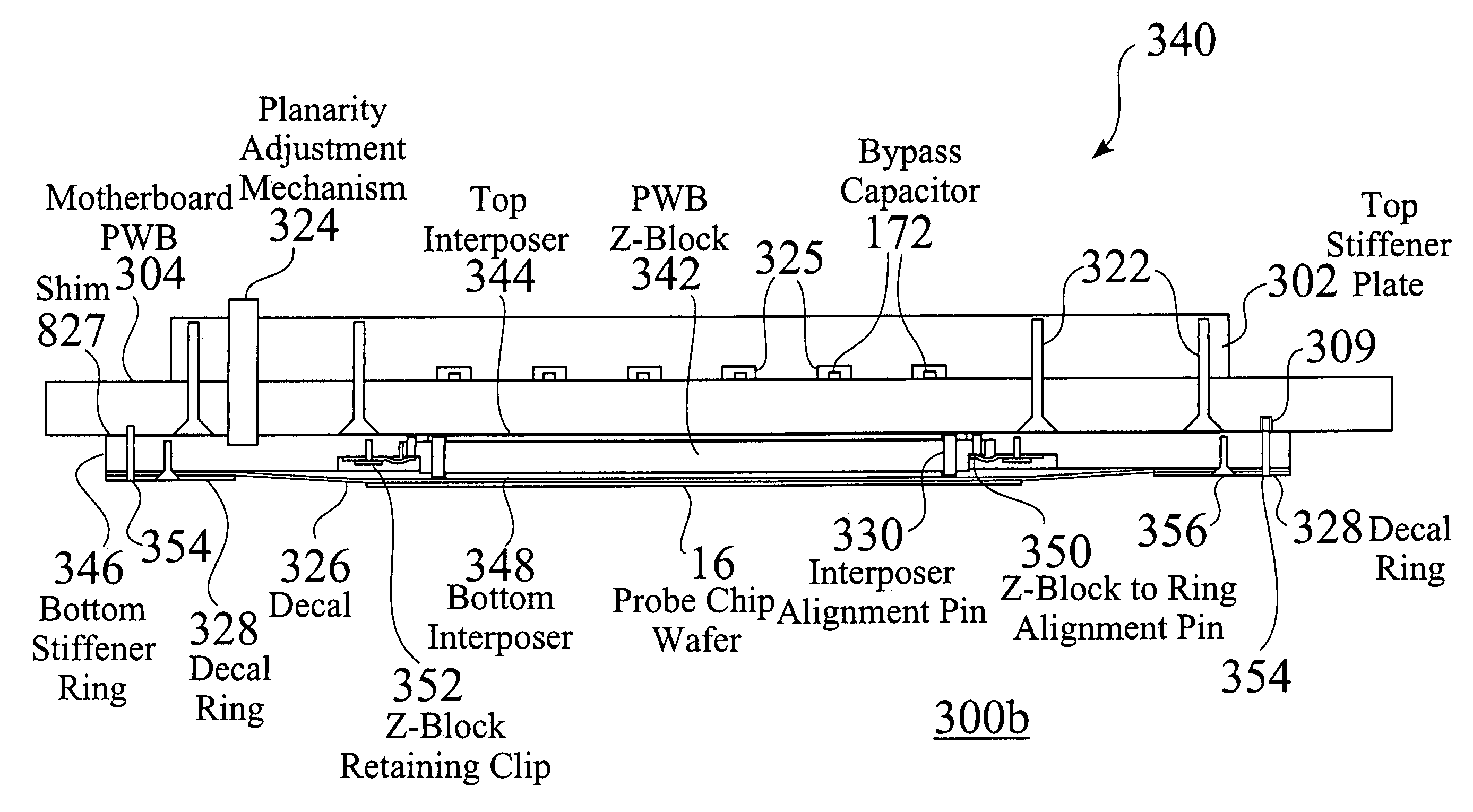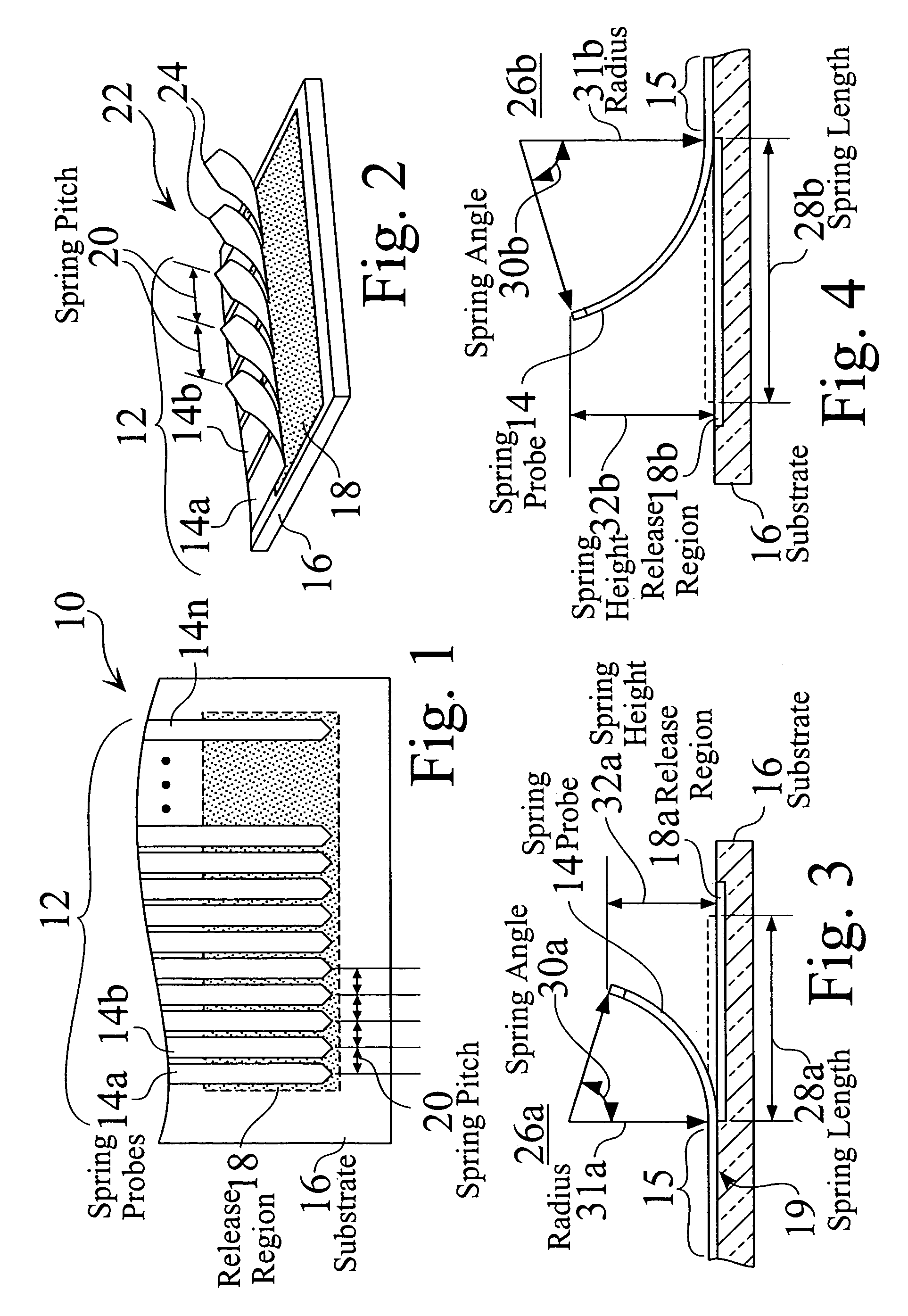Enhanced compliant probe card systems having improved planarity
a probe card and compliant technology, applied in the direction of semiconductor/solid-state device testing/measurement, coupling device connection, instruments, etc., can solve the problems of inability to meet the requirements of the test, etc., to achieve high parallel testing levels, reduce assembly manufacturing cost and manufacturing time, and extend mechanical compliance
- Summary
- Abstract
- Description
- Claims
- Application Information
AI Technical Summary
Benefits of technology
Problems solved by technology
Method used
Image
Examples
first embodiment
[0443]Two preferred embodiments are currently contemplated. the invention uses a low-count mosaic comprised of a few probe chips, for example four probe chips. The probe chips have the same TCE as the wafer under test, e.g. silicon. In this embodiment, the probe chip is peripherally attached to the membrane.
second embodiment
[0444]the invention provides a high-count mosaic, using a high number of probe chips, for example nine or more probe chips. In this embodiment, the probe chips are smaller and can have a slight TCE difference from that of the test wafer, e.g. silicon. For example, the probe chips may be made out of a ceramic material. This embodiment of the invention uses a center attachment to secure the probe chips to the membrane.
[0445]Other embodiments with different TCE matching characteristics and probe chip sizes could benefit from attaching at both the central and peripheral areas to the membrane.
[0446]FIG. 98 and FIG. 99 show a low-count mosaic starting substrate 1200, 1210, which is fabricated using known techniques to provide an array of die site regions, each having contacts formed on a first surface 62a thereof that are complementary to the die pads of devices to be tested and / or burned in on a test wafer. Contacts are also formed on a second, opposite surface 62b of the die site region...
PUM
| Property | Measurement | Unit |
|---|---|---|
| size | aaaaa | aaaaa |
| temperatures | aaaaa | aaaaa |
| frequencies | aaaaa | aaaaa |
Abstract
Description
Claims
Application Information
 Login to View More
Login to View More - R&D
- Intellectual Property
- Life Sciences
- Materials
- Tech Scout
- Unparalleled Data Quality
- Higher Quality Content
- 60% Fewer Hallucinations
Browse by: Latest US Patents, China's latest patents, Technical Efficacy Thesaurus, Application Domain, Technology Topic, Popular Technical Reports.
© 2025 PatSnap. All rights reserved.Legal|Privacy policy|Modern Slavery Act Transparency Statement|Sitemap|About US| Contact US: help@patsnap.com



